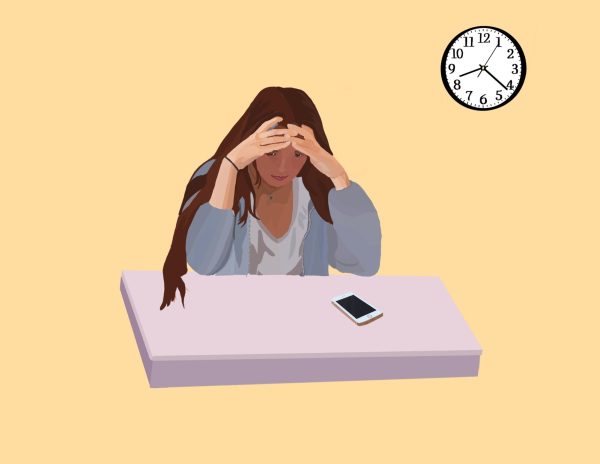How To Prevent An Unhealthy Addiction With Instagram
By Jordan Larkin
Staff Writer
Two years ago, a writer from Time Magazine, Amanda MacMillan, published the article “Why Instagram is the Worst Social Media for Mental Health.” Using the research from the #StatusOfMind survey—a survey from the United Kingdom’s Royal Society for Public Health with 1,500 respondents from the ages of 14-24— MacMillan identifies Instagram as the worst social media because of “high levels of anxiety, depression, bullying, and FOMO, or the ‘the fear of missing out.’”
Considering the age of teens in the survey and how some middle school students now sign up for Instagram before they are fourteen, those students and parents need to take cautionary steps to prevent an unhealthy addiction to Instagram. Below are some tips to using this applications to promote positive mental health. These tips include always making sure each individual authentically represents his or her identity, responsibly monitors application usage, and selectively posts content.
Be Authentic
In order to express one’s authenticity within Instagram, the first priority is to make sure a user’s post reaffirms what makes him or her happy. When one is confident and posts a picture that represents the user’s genuine self, that person should never worry about the likes or followers. However, a user must be careful with exactly what they post. If a parent was able to access their kid’s account, the user would want to make sure their parents approve of what they post. They would also want their parents to be able to see that they aren’t being inauthentic and are expressing themselves the same way as at home.
“I feel like [it’s] more effective if [people] block a lot of that stuff out and try to ignore what everyone else is doing. Set your own path. Too many people are jumping onto bandwagons and different trends,” former CEO of Youtube, Chad Hurley said.
In other words, users should not just post what other people want to see. If a person thinks the only way to get the most likes is to be trendy, that is not a healthy mindset for using Instagram. However, if the person is genuinely happy to post it, then go for it; however, don’t use the app solely intended to make people think the user is “cool” or “popular.” Instead, use it to embrace and celebrate a person’s true self.
Monitor App Usage
Limiting one’s self to a certain amount of screen time can help control a person’s amount of Instagram use. Many companies have come out with applications that can show how much time a user spends on Instagram, One of the biggest cell phone companies, Apple, has started to implement features within their updates to help people reduce screen time. This past September, Apple has put a “downtime” feature in settings that can put limits on apps in order to use them less.
“Set a specific time, like bedtime, when apps and notifications are blocked. You can choose which apps are on and off limits,” Apple said in their description of the feature.
This was intended for all people, not just teens, to reduce being on their phone constantly; however, for teens that have just gotten Instagram, they can become vulnerable to this addiction because of how early they are getting on this app. Limiting the time usage on this app could lead people to be less reliant on it and create a more healthy relationship with it.
Be Selective
Users should be selective in everything about their actions on this application. If a person posts multiple times a day, they are biologically more likely to create a dependency on the application because each like on a post boosts one’s self-esteem. However, if a person only posts when they feel they need to to share kind and positive content, then they won’t be worrying about the attention it will receive.
“Through likes and follows, teens are getting actual data on how much people like them and their appearance,” said Lindsey Giller, a clinical psychologist at the Child Mind Institute.
In addition, users should be selective in accepting followers. Followers do not determine how “popular” a user is. A user should be selective about who follows them and should make sure they know exactly who follows them. If a user accepts people who they do not know, it creates an unsafe environment for the individual.
Teens are already going through enough with the transition from middle school or to high school. The last thing they need is the feeling of always checking a phone to see what’s happening on Instagram. By following these tips—being authentic and selective, and monitoring usage—users can prevent an unhealthy addiction to Instagram.











